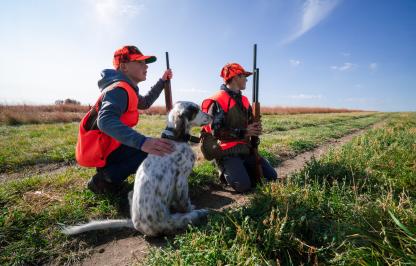The Wyoming Game and Fish Department is trying something new this year in their ongoing effort to monitor chronic wasting disease in Wyoming. CWD is a fatal disease of the central nervous system in mule deer, white-tailed deer, elk and moose.
For the first time, Game and Fish is requiring mandatory CWD sample submission on deer harvested from Deer Hunt Areas 96 and 97. These areas are home to the Sweetwater Herd Unit in the Lander Region.
“These hunt areas were selected because this herd unit is a priority for CWD data collection,” said
Daryl Lutz, Game and Fish wildlife management coordinator in Lander. “The number of samples needed is extremely difficult to get using traditional check stations and field checks, and there is an opportunity with adequate CWD sample collection and data to assess the effect of proportionally high buck harvest as it may relate to CWD prevalence.”
“Hunters can bring their deer in at Game and Fish-operated check stations or department regional offices,” Lutz said. “If necessary, hunters can submit samples on their own.”
Deer Hunt Areas 96 and 97 open for archery on Sept.1 and rifle seasons on Oct. 15. Successful hunters can submit samples by taking their harvested animal to a check station, a Game and Fish office, or by collecting a sample themselves. To learn more about collecting a sample yourself, watch the online video, complete a submission form, and mail to the Wildlife Health Lab. Please visit wgfd.wyo.gov/CWD-testing for instructions and more information.
Animals with CWD may show weight loss, reluctance to move, excessive salivation, droopy ears, increased drinking and urinating, lethargy, and eventually death. However, not all animals show symptoms; the majority of CWD-positive animals that are harvested appear normal. The only way to know whether a harvested animal has CWD is to have it tested.
Since 1997 Game and Fish has monitored the distribution and prevalence of CWD to better understand how it affects the health of Wyoming’s deer and elk populations. The disease is found more in deer than elk in the state.
“Hunters have an important role in wildlife health research and management,” Lutz said. “The success of Wyoming’s monitoring efforts are in large part due to hunter cooperation. We appreciate hunters getting their harvested deer to us for sampling or taking the samples themselves (lymph nodes) and getting them to us,” Lutz said.
For more information about Game and Fish’s efforts with CWD go to: https://wgfd.wyo.gov/CWD


